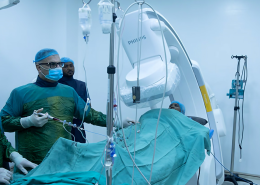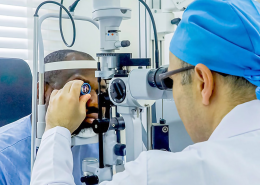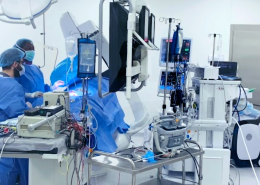Introduction
A brachiocephalic arteriovenous fistula (AVF) is a surgically created connection between the brachial artery and the cephalic vein in the upper arm. It is a standard vascular access type for patients requiring long-term hemodialysis, especially when more distal veins are unsuitable or have failed.
Why and When It’s Done
- Provides a high-flow, durable vascular access for patients with end-stage renal disease (ESRD) who require hemodialysis.
• Considered when wrist or forearm veins are too small, scarred, or otherwise unsuitable, making a more proximal option preferable.
Procedure Overview
- Preoperative evaluation, including ultrasound and possibly venous mapping, to confirm vessel size and anatomy.
2. Under local or general anesthesia, the surgeon dissects the cephalic vein and brachial artery, mobilizes them if needed, and connects them by anastomosis.
3. After surgical connection, the vein arterializes, thickening and enlarging under increased blood flow to become suitable for dialysis.
Benefits and Limitations
Pros: Lower infection risk than synthetic grafts, better long-term patency, and fewer complications when well-maintained.
Cons: Risks include steal syndrome, cephalic arch stenosis, thrombosis, failure to mature, and infection.
Aftercare and Monitoring
- Regular monitoring by the vascular access team through clinical checks, ultrasound, and interventions if needed.
• Daily self-checks by the patient: feeling the vibration (‘thrill’), keeping the arm clean, avoiding tight clothing, and reporting swelling, pain, or bleeding.
• Activity modifications: avoid lifting heavy objects for a few weeks, keep the wound dry, and follow fistula maturation exercises.
When a Brachiocephalic Fistula Might Not Be Ideal
- Patients with poor arterial inflow or central venous stenosis may require alternative access types.
• If there is a high risk of steal syndrome or inadequate veins, alternatives include basilic vein transposition, graft, or tunneled catheter.





